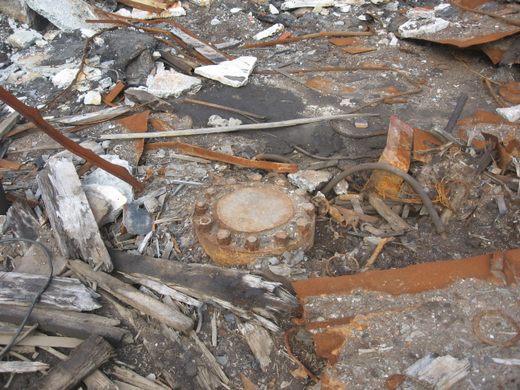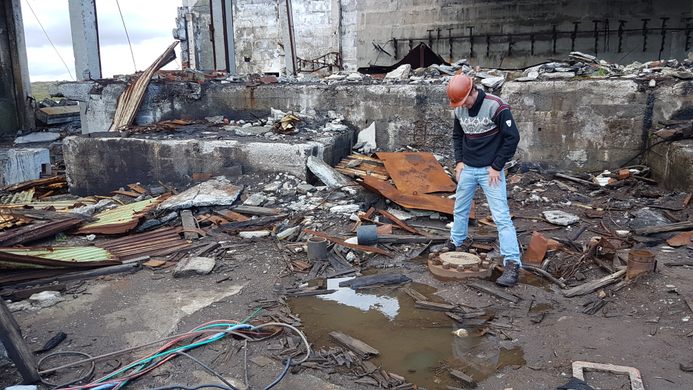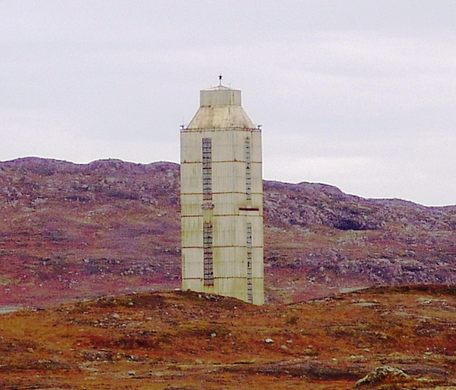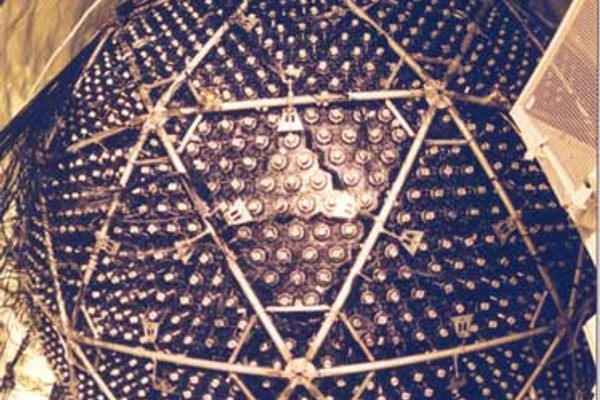AO Edited
Kola Superdeep Borehole
The deepest hole drilled in the name of science, where evidence of Precambrian life was found.
It has been said that the human race knows more about certain distant galaxies than it does about the ground that lies beneath its very feet. In fact, while it took the famous Voyager 1 satellite 26 years to exit our Solar System (relaying measurements to Earth from 16.5 billion km away), it took about the same amount of time for humanity to penetrate a mere 12 km into the Earth’s surface.
While the U.S. and U.S.S.R. vied for space exploration supremacy during the Space Race, a different, less-publicized race took place between the two nations’ greatest drillers. In the late 1950s and early 1960s Americans and Soviets began planning separate efforts to drill as deep as possible into the Earth’s crust, the rocky shell that comprises the outer 30-50 km of the 6730 km distance to our planet’s core.
The American “Project Mohole,” stationed off the Pacific coast of Mexico, was cut short in 1966 due to lack of funding but set an important precedent for future off-shore drilling programs. The Soviets, thanks to the planning of the Interdepartmental Scientific Council for the Study of the Earth’s Interior and Superdeep Drilling, had greater success. From 1970 to 1994 their drill on the Kola Peninsula chipped slowly away to create a Earth-shattering record at the time: the deepest hole in the world.
In actuality, the Kola Superdeep Borehole consists of several holes branching from one central hole. The deepest hole is called “SG-3,” and though just nine inches in diameter, it extends down a staggering 7.5 miles. That’s roughly a third of the way through the Baltic continental crust.
To meet scientific objectives and provide a nearly continuous look at the crust’s profile, the Soviets even developed instruments to take direct physical measurements at the bottom of the borehole. The drilling apparatus thus allowed for greater measurement integrity, since rock samples would deform under their incredible internal pressure when brought to the surface. Needless to say, the project produced enormous amounts of geological data, most of which elucidated how little we know about our planet.
The study of the Earth is often largely limited to surface observations and seismic studies, but the Kola borehole allowed a direct look at the structure of the crust and put geologists’ theories to the test. One of the most surprising findings was the absence of the transition from granite to basalt, which scientists had long expected to exist between three and six kilometers below the surface. Known to geologists as the “Conrad discontinuity,” this transition in rock type was reasoned to exist due to the results of seismic-reflection surveys.
Though the discontinuity has been detected beneath all of the continents, the drill at Kola never encountered the proposed layer of basalt. Instead, the granitic rock was found to extend beyond the twelve kilometer point. This led to scientists’ realization that the seismic-reflection results were due to a metamorphic change in the rock (i.e. from intense heat and pressure), and not a change in rock type as they had previously anticipated.
But the most intriguing discovery made by the Kola borehole researchers is undoubtedly the detection of biological activity in rocks more than two billion years old. The clearest evidence of life came in the form of microscopic fossils encased in organic compounds that remained surprisingly intact despite the extreme pressures and temperatures of the surrounding rock.
While data produced by the Kola drilling project continues to be analyzed, the drilling itself was forced to stop in the early 1990s when unexpectedly high temperatures were encountered. While the temperature gradient conformed to predictions down to a depth of about 10,000 feet, temperatures after this point increased at a higher rate until they reached 180 °C (or 356 °F) at the bottom of the hole. This was a drastic difference from the expected 100 °C (212 °F). Also unexpected was a decrease in rock density after the first 14,800 feet. Beyond this point the rock had greater porosity and permeability which, paired with the high temperatures, caused the rock to behave more like a plastic than a solid and made drilling near impossible.
A repository of the many core samples can be found in the nickel-mining town of Zapolyarny, about ten kilometers south of the hole. For its ambitious mission and its contributions to geology and biology, the Kola Superdeep Borehole remains one of the most important relics of Soviet-era science.
Know Before You Go
The Kola Superdeep Borehole is located 10 kilometers north of the town of Zapolyarny, in the Pechengsky District of Murmansk Oblast, Russia. The Kola Core Repository is in the town of Zapolyarny. Best to have a suitable car for bad roads.

























Follow us on Twitter to get the latest on the world's hidden wonders.
Like us on Facebook to get the latest on the world's hidden wonders.
Follow us on Twitter Like us on Facebook